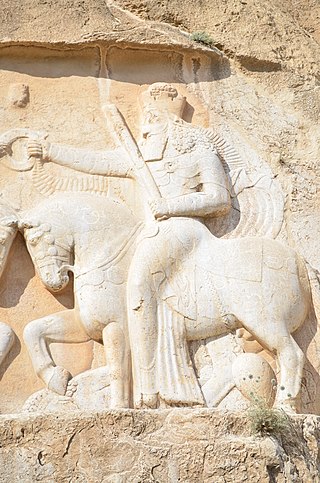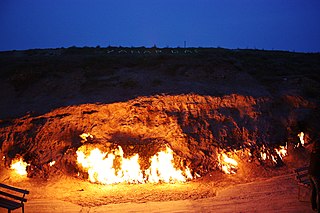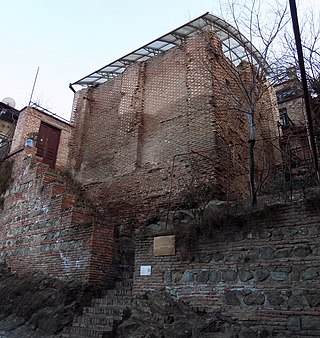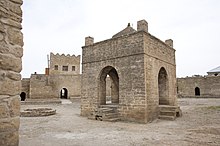
Zoroastrianism is an Iranian religion and one of the world's oldest organized faiths, based on the teachings of the Iranian-speaking prophet Zoroaster. It has a dualistic cosmology of good and evil within the framework of a monotheistic ontology and an eschatology which predicts the ultimate conquest of evil by good. Zoroastrianism exalts an uncreated and benevolent deity of wisdom known as Ahura Mazda as its supreme being. Historically, the unique features of Zoroastrianism, such as its monotheism, messianism, belief in free will and judgement after death, conception of heaven, hell, angels, and demons, among other concepts, may have influenced other religious and philosophical systems, including the Abrahamic religions and Gnosticism, Northern Buddhism, and Greek philosophy.

Zoroaster, also known as Zarathustra, is regarded as the spiritual founder of Zoroastrianism. He is said to have been an Iranian prophet who founded a religious movement that challenged the existing traditions of ancient Iranian religion, and inaugurated a movement that eventually became a staple religion in ancient Iran. He was a native speaker of Avestan and lived in the eastern part of the Iranian plateau, but his exact birthplace is uncertain. He founded the first monotheistic religion in the world and also had an impact on Plato, Pythagoras, and the Abrahamic religions - Judaism, Christianity, and Islam.

Ahura Mazda, also known as Oromasdes, Ohrmazd, Ormusd, Ahuramazda, Hoormazd, Harzoo, Hormazd, Hormaz and Hurmuz, is the creator deity and god of the sky in Zoroastrianism. He is the first and most frequently invoked spirit in the Yasna. The literal meaning of the word Ahura is "lord", and that of Mazda is "wisdom".
Apam Napat is a deity in the Indo-Iranian pantheon associated with water. His names in the Vedas, Apām Napāt, and in Zoroastrianism, Apąm Napāt, mean "child of the waters" in Sanskrit and Avestan respectively. Napāt is cognate with Latin nepos and English nephew. In the Rig Veda, he is described as the creator of all things. It is considered to originate from the Proto-Indo-European Hepom Nepōts.

Atropatene, also known as Media Atropatene, was an ancient Iranian kingdom established in c. 323 BC by the Persian satrap Atropates. The kingdom, centered in present-day northern Iran, was ruled by Atropates' descendants until the early 1st-century AD, when the Parthian Arsacid dynasty supplanted them. It was conquered by the Sasanians in 226, and turned into a province governed by a marzban ("margrave"). Atropatene was the only Iranian region to remain under Zoroastrian authority from the Achaemenids to the Arab conquest without interruption, aside from being briefly ruled by the Macedonian king Alexander the Great.

The Faravahar, also known as the Foruhar (فروهر) or the Farre Kiyâni, is one of the best-known symbols of Zoroastrianism, an Iranian religion. There are various interpretations of what the Faravahar symbolizes, and there is no concrete universal consensus on its meaning. However, it is commonly believed that the Faravahar serves as a Zoroastrian depiction of the fravashi, or personal spirit.
The culture of Azerbaijan combines a diverse and heterogeneous set of elements which developed under the influence of Turkic, Iranic and Caucasian cultures. The country has a unique cuisine, literature, folk art, and music.

Zoroastrianism is the oldest remaining religion in Iran. Founded around the middle of the second millennium BCE, the religion spread through the Iranian area through conversions and eventually became state religion in the Achaemenian Empire in the 6th century BCE. The religion still survives to this day in small communities, mostly located in present Iran and India. The Zoroastrians in India are called Parsis.

The Ateshgah of Baku, often called the "Fire Temple of Baku", is a castle-like religious temple in Surakhany town, a suburb in Baku, Azerbaijan.

Yanar Dagh is a natural gas fire which blazes continuously on a hillside on the Absheron Peninsula on the Caspian Sea near Baku, the capital of Azerbaijan. Flames jet into the air 3 metres (9.8 ft) from a thin, porous sandstone layer. Administratively, Yanar Dagh belongs to Absheron District of Azerbaijan.

Khinalug, Khynalyg, or Khinalyg, is an ancient Caucasian village going back to the Caucasian Albanian period. It is located high up in the mountains of Quba District, Azerbaijan. It is also a municipality in Quba District, which consists of the villages of Khinalug and Galaykhudat.

Hinduism in Azerbaijan has been tied to cultural diffusion on the Silk Road. One of the remnants of once-dominant Hindu and Buddhist culture in the Caucasus is Surakhani, the site of the Ateshgah of Baku. As of 2020, there were about 500 Hindus in Azerbaijan.
Atashgah or Ateshgah may refer to:

The Fire Temple of Isfahan is a Sassanid-era archaeological complex located on a hill of the same name about eight kilometers west of city center of Isfahan, Iran.

Anahita is the Old Persian form of the name of an Iranian goddess and appears in complete and earlier form as Aredvi Sura Anahita, the Avestan name of an Indo-Iranian cosmological figure venerated as the divinity of "the Waters" (Aban) and hence associated with fertility, healing and wisdom. There is also a temple named Anahita in Iran. Aredvi Sura Anahita is Ardwisur Anahid or Nahid (ناهید) in Middle and Modern Persian, and Anahit in Armenian. An iconic shrine cult of Aredvi Sura Anahita was, together with other shrine cults, "introduced apparently in the 4th century BCE and lasted until it was suppressed in the wake of an iconoclastic movement under the Sassanids." The symbol of goddess Anahita is the Lotus flower. Lotus Festival is an Iranian festival that is held on the end of the first week of July. Holding this festival at this time was probably based on the blooming of lotus flowers at the beginning of summer.

Tourism in Azerbaijan has been an important sector of the Azerbaijani economy since the 1990s. According to Azerbaijan's Center for Economic and Social Development, the country is in 39th place among 148 countries in tourism competitiveness indicators. The World Travel and Tourism Council reported that Azerbaijan is among the top ten countries with the greatest increase in visitor exports from 2010 to 2016. The country had the world's fastest-developing travel and tourism economy in 2017. To promote tourism, Azerbaijan sponsored Atlético Madrid jerseys reading "Azerbaijan – Land of Fire". In 2018, a new tourism brand and a slogan "take another look" were introduced.

The Atashgah, also transcribed as 'Ateshgah is an ancient Zoroastrian fire temple in Tbilisi, Georgia. It was built when Georgia was a part of Persian Empire in Sasanian era. It is described as the "northernmost Zoroastrian fire-temple in the world."

Ancient Iranian religion or Iranian paganism was the ancient beliefs and practices of the Iranian peoples before the rise of Zoroastrianism. The religion closest to it was Hinduism that is practiced in India. The major deities worshipped were Varuna and Mithra from Iran to Rome, but Agni was also worshipped, as names of kings and common public showing devotion to these three exist in most cases. But some sects, the precursors of the Magi, also worshipped Ahura Mazda, the chief of the Asuras. With the rise of Zoroaster and his new, reformatory religion; Ahura Mazda became the principle deity and the Devas were relegated to the background. A lot of the attributes and commandments of Varuna, called Fahrana in Median times, were later attributed to Ahura Mazda by Zoroaster.

















